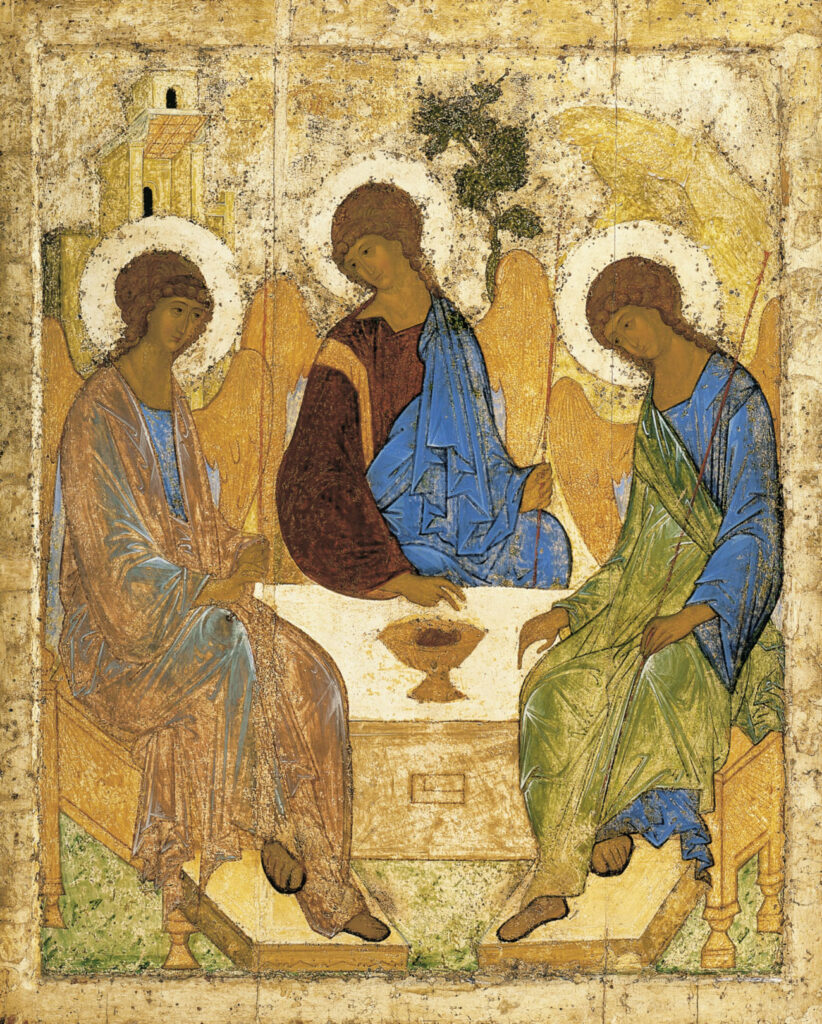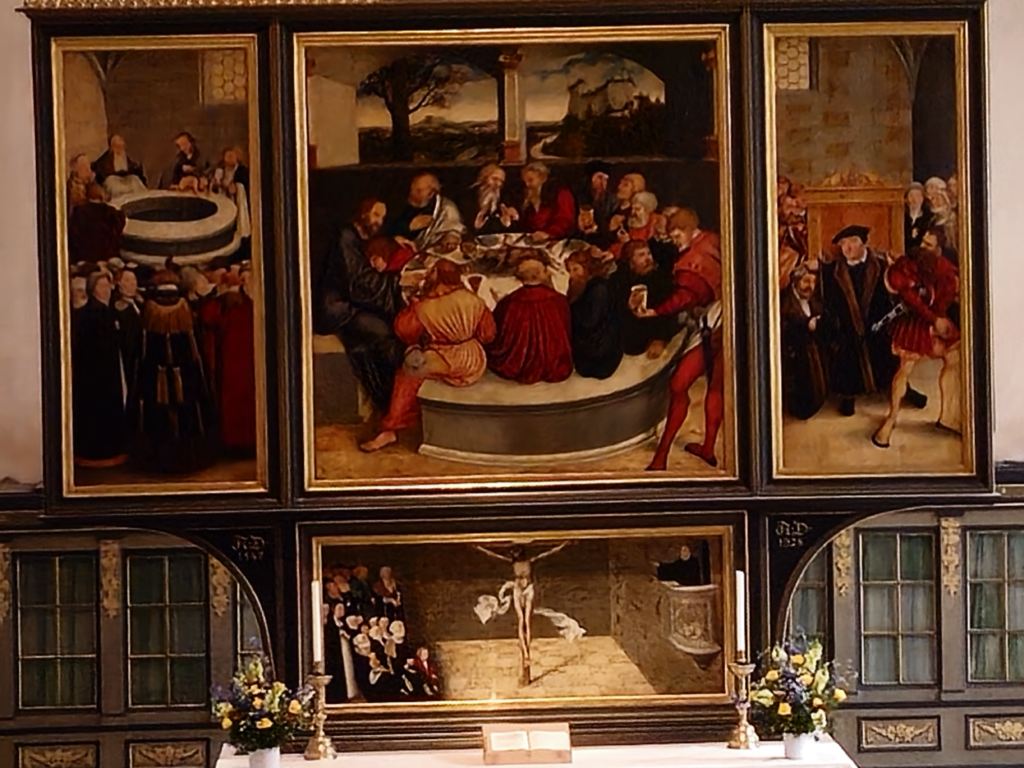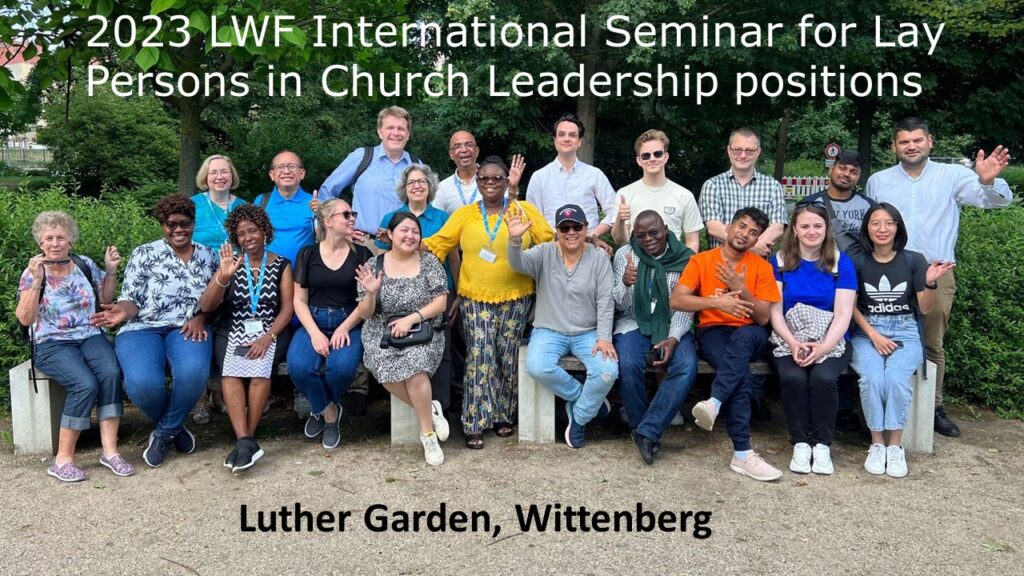What happens when 19 people from 19 cities around the world journey together for nine days in a Lutheran World Federation (LWF) lay leaders seminar?[1]
Mishaps
Some miss flights and lose their luggage. The delegate from Kenya arrived a day late, minus her suitcase. She only got it back after she arrived home! But she experienced overwhelming grace. Her newfound friends graciously shared with her the contents of their own suitcases.[2]
Some get seriously ill. The delegate from Malaysia had a bout of hay fever which kept his eyes tearing, nose flowing and throat coughing. One delegate from India and another from Guyana required hospital visits. All experienced overwhelming grace and acts of thoughtfulness.
Some get lost. During a walking tour in Geneva, several participants got cut off from the main group. Thanks to deft use of WhatsApp and Google maps, and ‘hunting’ by an LWF leader, the lost were found and restored.
Many more stories of mishaps can be told. They’re all stuff that doesn’t happen when you meet online or never venture out of one venue or remain in your homeland.
Challenges
Other stories are of what participants shared with each other either one-to-one or one-to-many.
LGBTQ. One participant shared that LGBTQ activists in the public space in her nation are often Christians. And they publicly challenge the church to conduct same-sex marriages.
Instruments. Another shared that no instrument other than the organ or piano is allowed in his congregation during public worship.
Youth. Yet another lamented that youth in his church are excluded from leading worship except on Youth Day each year.
Those are ad hoc stories shared during discussion times which followed presentations made by two seminary lecturers, and by department directors and other LWF officers.
Inspiration
There are also prepared stories. Each participant came with a three-minute presentation about a leader who had inspired him/her to be a leader.
It was very touching to hear about a pastor’s wife whose exercise of hospitality, forgiveness and acceptance inspired their daughter to serve. Of pastors whose encouragement, strictness and care drew others into sustained service. Of laypersons who modelled sacrificial, urgent leadership.
Worship
Perhaps the best part of all was worshipping together at the beginning and end of each day, in venues ranging from classrooms to parks to chapels. All the worship was aided by printed liturgies, responsive readings, and always, songs and prayers in multiple languages.
Each worship session ended with a sense of solemnity, of having met the Triune God, of being drawn in and of being sent out by Him.
Learning
LWF. We became aware of the spread of work done by LWF: serving victims worldwide, becoming better Samaritans, reconciling the long-estranged, reflecting theologically to set activities on firm footings.
New Testament. We got a good recap of New Testament teaching about the church. We learned not just the content, but the context in which it was produced. The context was expectation of the imminent return of Christ, of immense persecution, of internal conflicts.
Lutheranism. That recap set the scene for us to be introduced to the foundational documents of the Lutheran church. These documents, gathered in 1580 as “the Book of Concord,” were the fruit of dialogue to correct errors which had built up over 15 centuries – the Reformation.
Two paintings
Two paintings were used effectively to encapsulate the whole seminar.
The first painting depicts God’s free invitation to all, whether clergy or laity, to enter the embrace of The Holy: The Trinity (1411 CE) by Andrei Lublev. (Note the date – a century before Luther’s 95 theses.)

The second painting depicts the role of both clergy and laity in the church, the assembly and workforce of God: it’s the altarpiece (1547 CE) in Luther’s church in Wittenberg, painted by Lukas Cranach.
The altarpiece shows Melanchthon, a layman, baptizing a child. (Melanchthon also authored several foundational Lutheran documents, including the Augsberg Confession, 1530 and Apology, 1531.)
The figures in the altarpiece are recognizably townspeople, not clergy or venerated persons, as was the norm in those days. In addition to Luther, it includes Luther’s wife Katarina, Cranach, and Cranach’s wife,

Concluding thought
Much of what I learned isn’t new to me. Rather, it’s a reminder of what I’ve learned and forgotten after 43 years in churches.
Being reminded in the context of LWF’s work of worshipful peace-making and establishing justice makes me wonder: How do we prevent forgetting who the church is? How do we know if it’s gone off-course?
[1] 19-26 June, 2023, excluding arrival and departure dates. There were 17 participants and two principal instructors, Rev Dr Samuel Dawai (LWF, Cameroon) and Rev Dr Cheryl Robertsen (ELCA, soon-to-be Academic Dean, Wartburg Theological Seminary, USA). The venues were the Ecumenical Centre, Geneva and Colleg Wittenberg, Wittenberg.
[2] Two others experienced luggage delays. Others experienced flight delays. All experienced grace.
To learn more about Rama, click here.


